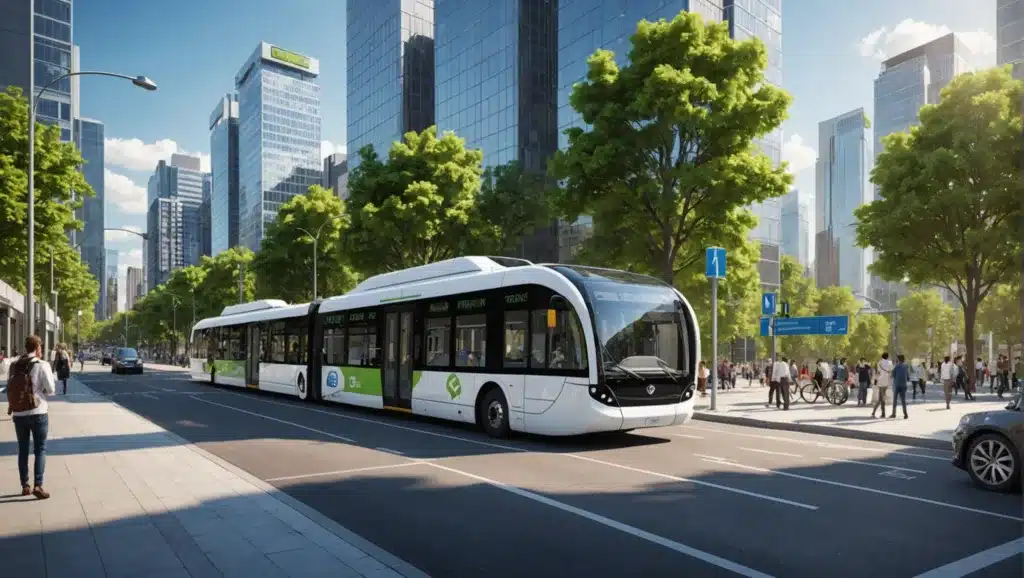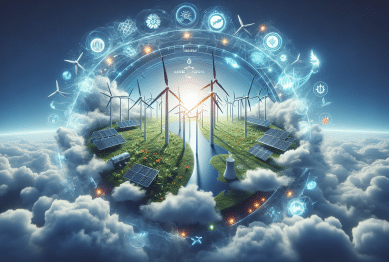The world of transportation is undergoing a rapid transformation. As cities grow and environmental concerns intensify, eco-friendly transportation innovations are no longer optional—they are essential. In 2025, electric vehicles, hydrogen-powered transport, and smart urban mobility solutions are leading the way, reshaping how people and goods move while significantly reducing carbon emissions.

Electric Vehicles: Pushing Boundaries
Electric vehicles (EVs) have evolved from niche options to mainstream transportation solutions, offering cleaner, quieter, and more efficient alternatives to gasoline-powered cars.
Breakthrough Battery Technologies
Battery technology is the cornerstone of EV innovation. Solid-state batteries, pioneered by companies like Toyota and QuantumScape, promise higher energy density, longer lifespans, and faster charging times compared to traditional lithium-ion batteries. These advancements could extend vehicle range by up to 50% and allow for full charges in under 20 minutes, addressing two of the biggest hurdles in EV adoption (1).
Expansion of Charging Infrastructure
Charging accessibility is critical for EV growth. In 2025, cities and private companies are expanding public charging networks at an unprecedented pace. Tesla, EVgo, and Ionity are rapidly rolling out fast-charging stations capable of delivering 250–350 kW, enabling drivers to recharge for long-distance trips within 15–30 minutes. Urban parking facilities are also integrating EV chargers, ensuring that residents without private garages can access convenient charging.
Autonomous Electric Vehicles
The combination of electric and autonomous technologies is redefining transportation. Self-driving EVs are being tested in urban environments to optimize traffic flow, improve energy efficiency, and reduce emissions. Autonomous EVs use AI-powered routing and predictive algorithms to minimize unnecessary stops, prevent congestion, and enhance battery efficiency (2).
Hydrogen Fuel Cells: Powering Heavy Transport
Hydrogen fuel cells are emerging as a key solution for long-range and heavy-duty transport. While EVs excel in urban settings, hydrogen vehicles can meet the demands of freight, buses, and intercity travel.
Advantages of Hydrogen Fuel Cells
- Long-Range Capabilities: Hydrogen vehicles can travel over 600 miles on a single tank, far exceeding the range of most battery-electric trucks and buses.
- Zero Emissions: When produced using renewable energy, hydrogen fuel cells emit only water vapor, making them a true zero-emission option for sectors difficult to electrify (3).
Real-World Implementations
Countries like Japan, Germany, and South Korea are heavily investing in hydrogen infrastructure. For example, Japan has launched hydrogen buses in several cities, while Germany plans to integrate hydrogen-powered trucks into national logistics fleets. These initiatives not only reduce emissions but also create new green jobs and stimulate technological innovation.
Smart Urban Mobility: Redesigning Cities
Eco-friendly transportation extends beyond vehicles—it encompasses how cities manage mobility. Smart urban mobility solutions are reducing congestion, cutting emissions, and improving accessibility.
Micromobility Solutions
Micromobility, including e-scooters, e-bikes, and shared electric bikes, is becoming a staple of urban travel. These solutions provide efficient, low-emission alternatives for short trips, often replacing car journeys that contribute significantly to urban pollution. Cities like Paris, San Francisco, and Singapore have reported a 15–25% decrease in short car trips after introducing widespread e-bike and scooter programs (2).
Integrated Public Transport
Smart mobility platforms are increasingly integrating multiple transport options—buses, trains, bike-sharing, and ride-hailing—into a single system. Apps such as Citymapper and Moovit enable commuters to plan efficient, eco-friendly journeys by combining different modes of transport. This approach not only reduces private car usage but also enhances public transport utilization.
Traffic Optimization and AI
Artificial intelligence is playing a key role in optimizing traffic flow in major cities. In Amsterdam, AI-based traffic management has reduced average congestion by 20%, cutting fuel consumption and emissions. By analyzing real-time traffic patterns and predicting bottlenecks, these systems help cities run cleaner and more efficiently (2).
Renewable Energy Integration
The sustainability of eco-friendly transportation depends heavily on energy sources. Transitioning to renewable energy for powering vehicles is a crucial step.
Solar-Powered Charging Stations
Solar-powered EV chargers are becoming more common in cities worldwide. These stations harness solar energy to provide clean electricity directly to vehicles, reducing dependency on grid power generated from fossil fuels. In California, pilot programs combining solar panels with fast-charging stations have achieved a 40% reduction in operational carbon emissions.
Vehicle-to-Grid Technology
Some EVs now feature vehicle-to-grid (V2G) technology, allowing them to feed electricity back into the grid during peak demand. This not only stabilizes energy supply but also encourages EV adoption by providing additional economic incentives to owners. In the UK, V2G-equipped EVs are expected to contribute up to 2 GW of peak energy by 2030, highlighting the potential for sustainable energy integration.
Case Studies: Cities Leading the Way
Several cities are setting benchmarks for eco-friendly transportation:
- Oslo, Norway: Over 70% of new cars sold are electric. The city has also implemented extensive EV charging infrastructure and incentives, reducing urban air pollution and traffic emissions significantly.
- Singapore: Advanced traffic AI and micromobility initiatives have reduced car dependency while promoting public transport. Electric buses now account for 30% of the fleet, contributing to cleaner air.
- Tokyo, Japan: Hydrogen fuel buses and taxis are gradually replacing conventional vehicles. Hydrogen fueling stations are increasing, ensuring viability for commercial fleets.
These examples demonstrate how integrating technology, infrastructure, and policy can create sustainable, scalable transportation ecosystems.
Overcoming Challenges
Despite impressive progress, several challenges remain:
- High Initial Costs: EVs and hydrogen vehicles are still more expensive upfront than traditional vehicles, though long-term savings on fuel and maintenance offset these costs.
- Infrastructure Gaps: Many rural and developing regions lack adequate charging or hydrogen refueling stations. Expanding access is crucial for global adoption.
- Battery Production and Recycling: Sustainable sourcing of lithium, cobalt, and other critical materials remains essential to minimize environmental impacts. Advanced recycling technologies are being developed, but global implementation is still in progress.
Addressing these challenges requires collaboration between governments, manufacturers, and energy providers to create policies, subsidies, and sustainable supply chains that accelerate adoption.
Future Outlook
The outlook for eco-friendly transportation is promising. Analysts predict that by 2030, EVs could account for 40–50% of new car sales globally, while hydrogen vehicles will capture a significant share of the heavy-duty market. Innovations in AI, renewable energy, and battery technology will further enhance efficiency, accessibility, and environmental benefits.
Companies are also exploring next-generation mobility concepts such as:
- Electric Vertical Take-Off and Landing (eVTOL) Vehicles: Urban air taxis powered by electricity could revolutionize short-distance travel in congested cities.
- Hyperloop Systems: High-speed, low-emission transport solutions using magnetic levitation could connect cities while reducing environmental impact.
- Integrated Smart City Networks: Fully connected urban systems combining public transport, micromobility, and energy-efficient logistics will enable cities to function sustainably and reduce carbon footprints.
These innovations suggest that sustainable transportation is no longer a distant dream—it is becoming an integral part of modern life.
References
- Toyota. (2024). Solid-State Battery Development Updates. Available at: https://www.toyota-global.com (Accessed: 21 August 2025).
- McKinsey & Company. (2023). Autonomous and Electric Vehicle Trends. Available at: https://www.mckinsey.com (Accessed: 21 August 2025).
- International Energy Agency (IEA). (2023). The Future of Hydrogen. Available at: https://www.iea.org (Accessed: 21 August 2025).









